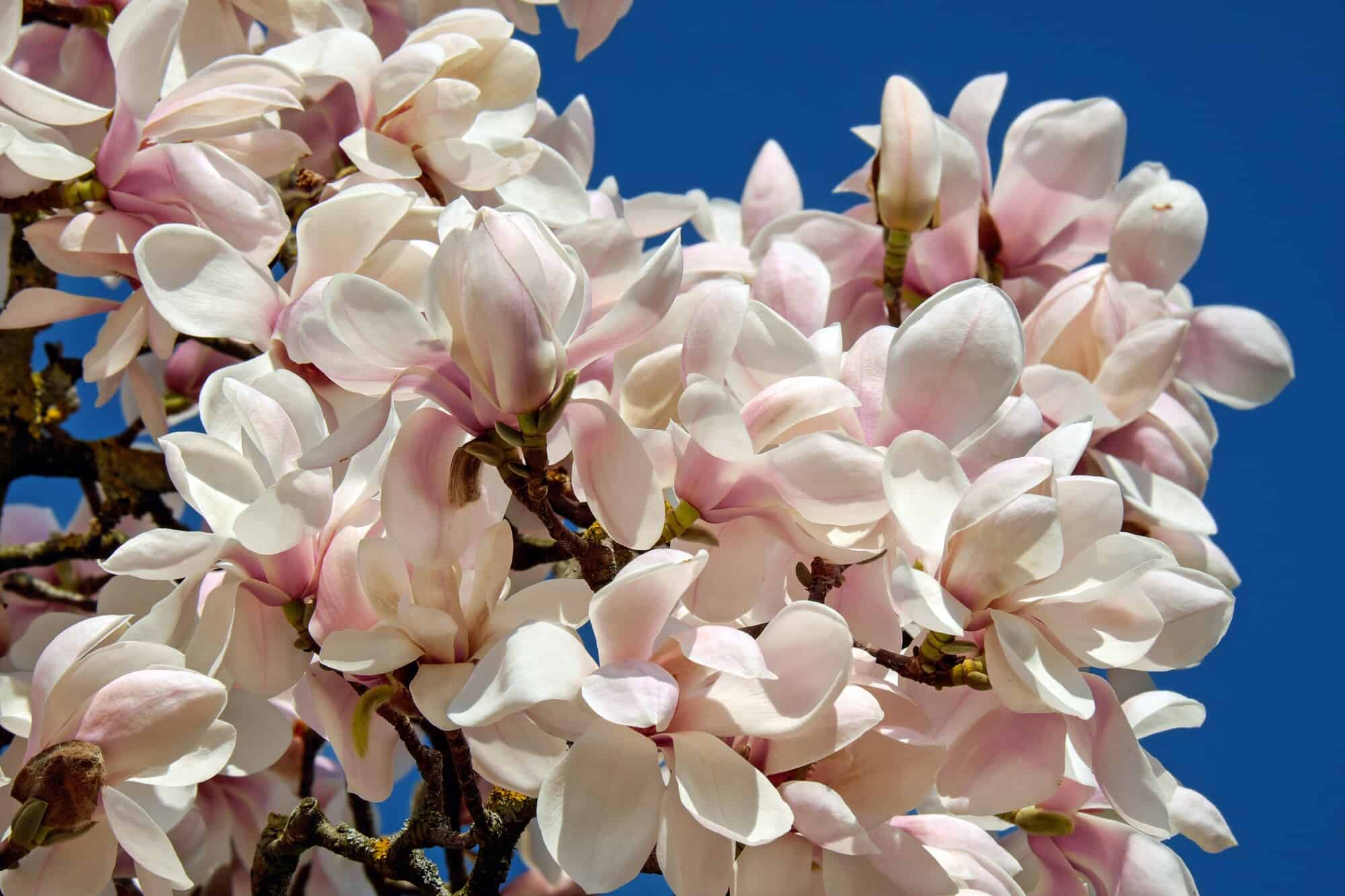How to Care for Your Magnolia Tree

How to Care For Your Magnolia Tree
Did you know that the magnolia is the state flower for both Louisiana and Mississippi? Out of all the different blooms to choose from, two states chose it to represent them. They can be grown in any region in the United States, from down in Florida all the way up to Washington and Maine.
Each magnolia tree has a different leaf shape, flower color, and size, making them a versatile tree to have in your garden. If you’re debating planting one in your yard or already have one growing, knowing how to care for it is essential to extending its lifespan and enjoying the wondrous blossoms.
This guide will go over everything you need to know about magnolia care and the iconic tree of the Southern region.
Magnolia Tree Information
The southern magnolia is best known for its large, distinctive flowers that are fragrant in some species of the tree. The blossoms grow individually on the tips of the tree’s branches. The wood is light and soft in color and is often used in making boxes and furniture.
You can find magnolias in evergreen and deciduous trees and shrubs. All of the species have smooth bark, with large flowers and leaves.
Magnolias get their name from Pierre Magnol. He was the director of the botanical garden in Montpellier, France, and named the quintessential blossom.
One of the most common species is the southern magnolia. It’s a broad-leaved evergreen tree that can get up to 80 feet tall. It’s most known for its creamy white flowers that are very fragrant and large leaves.
Another popular species is the sweet bay magnolia. This tree has more showy, exotic-looking blossoms than some of the other types of magnolias. In the spring and summer, the flowers exude a lemony fragrance.
The sweet bay magnolia can grow up to 50 feet tall in warmer climates, but where it’s cooler, they’ll stay around 30 feet.
Where to Plant Magnolia Trees
When looking for a place to plant a magnolia in your garden, choose wisely. Magnolia trees have shallow and wide root systems. That means they’re easily damaged if you try to move your tree to another location after it’s planted.
Keep in mind that magnolias can get quite tall. You want there to be enough room in the surrounding space for the adult tree.
If you’re planting an evergreen magnolia tree, plant it in the spring. For deciduous magnolias, plant them in the fall if you live in the South.
The type of soil you plant it in matters as well. The trees like soil that’s well-drained and rich in organic matter.
When planting a baby or young tree, stake them so their root system doesn’t get damaged by the wind. Deciduous trees enjoy being planted in partial shade. Evergreen trees need full sun to thrive.
How to Care for a Magnolia Tree
Magnolia trees don’t need a lot of maintenance. They can live for a hundred years if planted in the right conditions.
Pruning
A magnolia tree doesn’t need a lot of pruning. Watch out for dead or damaged branches, removing those as necessary. You might also want to shape the tree to keep it looking great.
The best time to prune your magnolia tree is in late spring or early summer. Do the pruning right after it finishes blooming for the year.
Watering
Most magnolia tree varieties can tolerate some drought and hot summers. However, younger trees need to be watered regularly, for up to two years and until they’re established. Setting up a drip irrigation system will ensure the tree is watered regularly and evenly.
If you’re unsure whether your tree needs watering, stick your finger in the soil under the tree. If it feels moist, you don’t need to water. If it feels dry, your tree likely needs deep watering.
Fertilizing
Since a magnolia tree’s roots can get damaged easily, casual fertilization is needed. The ideal time to fertilize your tree is in the late fall after all the leaves have dropped. You can also fertilize your tree in the spring before new growth starts.
Slow-release nitrogen fertilizer is the best type of fertilizer to use for your tree. Evenly spread the fertilizer on the surface of the ground around the tree.
You want to be mindful of how much you fertilize so you don’t over-fertilize. If you are fertilizing too much, the edges of the leaves will start to look burned and brown. Only fertilize your tree if it has weak growth or it’s a young tree.
Treating Magnolia Scale
A common ailment that can affect your magnolia there is magnolia scale. It’s not a fungus, it’s an insect that feeds off your tree. The female insects sit on branches and look like large lumps.
The insects suck out the tree sap, draining it and causing dying branches, yellow leaves, stunted growth, and sometimes, death. One sign of an infestation is sticky honeydew appearing on surfaces close to the tree. If you notice that, look at your tree branches.
In the early stages of magnolia scale, the tiny insects are dark and called “crawlers.” They’ll be on the tree’s branches during the winter and start feeding and getting large during the spring.
The female insects get large, anchor down on the tree’s branches, and eat the sap. They are white but will transition into a brown/purple shade. If you notice any type of insect or unknown substance on your tree, contact a reputable tree expert company to remedy the problem.
Enjoy the Blossoms of Your Magnolia Tree
A magnolia tree can provide you with copious amounts of shade and beautiful, fragrant blossoms. Taking the time to learn about how to care for a magnolia tree will ensure you enjoy it for years to come.
If you have any questions about where to plant your tree or how to properly take care of it, contact one of our tree specialists at AAA Tree Experts.



You must be logged in to post a comment.